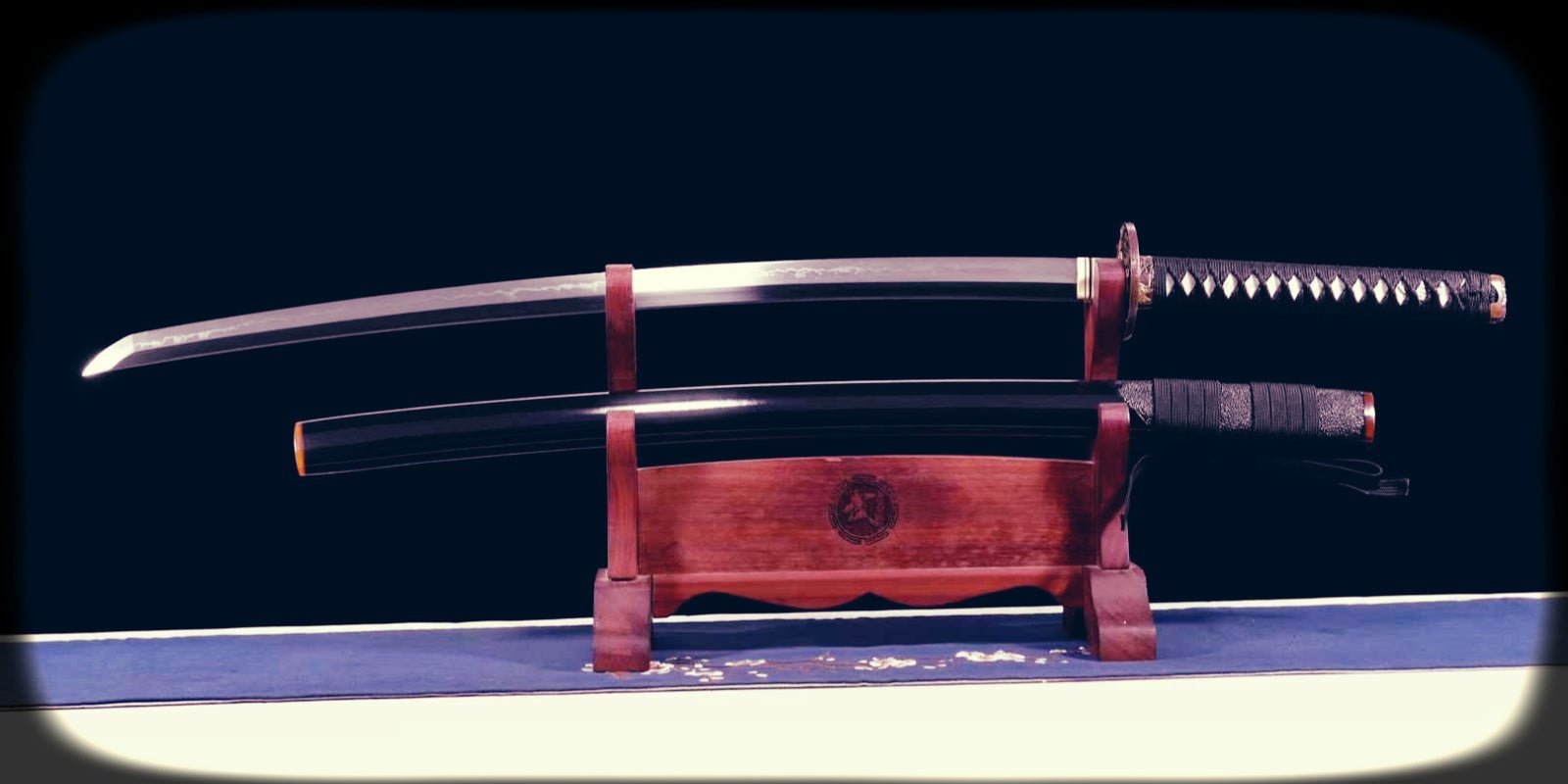Introduction to Mekugi-Ana: The Essential Aperture in a Katana Handle
The mekugi-ana is a critical structural element located on the tang, or nakago, of a katana. It refers to the hole through which the mekugi, a bamboo or metal peg, is inserted to secure the blade to the tsuka (handle). This small aperture ensures the stability and integrity of the sword during use, safeguarding both the wielder and the weapon itself.
Key features of the mekugi-ana include its:
- Position: Typically drilled through both the tang and handle, aligning perfectly is essential for functionality.
- Size: Precision in diameter allows a snug fit of the mekugi while avoiding unnecessary stress on the handle.
- Material Considerations: Its durability depends largely on the material of the tang and the engineering precision.
The mekugi-ana plays a quiet yet pivotal role in maintaining the katana’s balance, ergonomics, and safety. Its mastery reflects the craftsmanship behind authentic Japanese swordsmithing.
Historical Significance of Mekugi-Ana in Traditional Swordsmithing
The Mekugi-ana, the small holes drilled into the tang of a sword, played a critical role in the design and functionality of Japanese swords, particularly the katana. These features highlight the deep connection between practicality and craftsmanship in traditional swordsmithing.
Historically, the Mekugi-ana allowed for the katana’s blade to be securely fixed to the tsuka (handle) using mekugi pins, often made of bamboo. This innovation directly contributed to the sword’s durability and usability in battle.
Japanese swordsmiths meticulously planned the placement of Mekugi-ana, ensuring structural integrity without compromising balance or performance. This precision reflects the ingenuity of their martial and artistic traditions.
Anatomy of a Katana: Understanding the Role of Mekugi-Ana
The mekugi-ana, a small but vital hole in the tang (nakago) of a katana, serves as the foundation for securing the handle (tsuka) to the blade. This hole accommodates the mekugi, a tapered bamboo or metal peg, which keeps the sword firmly in place during use.
The strategic placement and size of the mekugi-ana are critical to maintaining the sword’s balance and structural integrity. Incorrect alignment can compromise safety and performance. Typically, katana tangs feature one or two mekugi-ana, depending on the style or maker, each drilled with precision to support rigorous handling.
By anchoring the blade and handle, the mekugi-ana enhances the katana's functionality and usability.
Materials and Construction of Mekugi: Strength and Durability Factors
The mekugi, a small yet critical pin securing the tang of a katana to the tsuka (handle), is traditionally crafted from materials selected for strength and resilience. Bamboo is most commonly used, specifically cured bamboo, which provides an ideal balance of flexibility and durability. Its fibrous structure resists fractures while maintaining the capacity to absorb shock during usage.
In contemporary settings, alternatives like hardwood and synthetic materials are occasionally employed, although they may lack bamboo’s performance characteristics. Precision in shaping and fitting the mekugi is vital; improper construction can compromise the katana’s stability. Factors such as material density, proper alignment, and snug fit directly influence reliability.
How Mekugi-Ana Influences Structural Integrity in a Katana
The Mekugi-ana, as the aperture for the placement of the mekugi (peg), plays a crucial role in maintaining the katana's structural integrity. This hole in the tang ensures the blade remains securely seated within the tsuka (handle) during use. The precise placement of the Mekugi-ana is paramount; improper alignment can compromise the connection between blade and hilt, risking breakage or instability.
Factors such as the size, shape, and location of the Mekugi-ana influence stress distribution along the tang. Well-crafted holes prevent undue stress from concentrating around the peg, safeguarding the katana from structural degradation during rigorous application.
Mechanics of Secure Assembly: Mekugi-Ana and the Sword Handle
The mekugi-ana, a small yet crucial hole in the tang (nakago) of a katana, plays a pivotal role in securing the blade to its handle (tsuka). A tapered bamboo peg, known as the mekugi, is inserted through this hole. This peg locks the blade into the tsuka, ensuring a reliable bond during use.
Proper alignment of the mekugi-ana and tsuka is critical, as even slight deviations can compromise structural integrity. Craftsmen must precisely calculate the placement to ensure strength without weakening the tang. Additionally, the size and shape of the mekugi-ana influence wear resistance, contributing to long-term performance and safety.
Impact on Katana Performance: Precision and Stability during Use
The placement and quality of the mekugi-ana directly influence the katana’s performance by ensuring the blade is securely attached to the tsuka. Precision in the mekugi-ana’s alignment prevents lateral movement, which can compromise the stability of the sword during use. Improper positioning or poorly crafted mekugi-ana may lead to instability, increasing the risk of blade misalignment under force.
Factors such as tightness of the mekugi and even distribution of pressure across the tang are critical. A well-executed design helps maintain balance, providing the user with greater control and precision in strikes, enhancing functionality both in ceremonial and combat contexts.
Regular Maintenance and Inspection of Mekugi-Ana: Ensuring Longevity
Regular maintenance and inspection of the mekugi-ana are essential for preserving the integrity and performance of a katana. Over time, the mekugi-ana can experience wear due to repeated disassembly and usage, potentially compromising its function. Owners must routinely check for cracks, deformation, or excessive enlargement of the mekugi-ana, as these issues can lead to instability in securing the tsuka (handle) to the tang.
When inspecting, it is crucial to:
- Ensure the mekugi fits snugly within the mekugi-ana without looseness.
- Clean around the holes to prevent debris accumulation.
- Replace damaged mekugi promptly to maintain blade alignment and safety.
Proactive care enhances durability while safeguarding functionality.
Modern vs Traditional Designs: Differences in Mekugi-Ana Applications
Traditional katana designs typically feature one mekugi-ana, carefully placed to ensure structural integrity while maintaining the blade's classical aesthetic. The craftsmanship emphasizes precise alignment between the tang and handle, blending functionality with artistic value. Samurai-era smiths often followed strict conventions, ensuring uniformity across blades.
Modern katana designs, however, may include one or two mekugi-ana, depending on usage requirements. Dual mekugi-ana configurations are favored for added security in practice swords, especially for tameshigiri. Technological advancements offer increased precision in drilling mekugi-ana, reducing risks of tang damage. While modern designs prioritize function and versatility, they sometimes diverge from traditional standards, sparking debate among practitioners and collectors.
Common Errors and Misalignments: Troubleshooting Mekugi-Ana Issues
Mekugi-ana issues often arise due to improper alignment or dimension inaccuracies during sword maintenance or manufacturing. Precision is critical when crafting these peg holes, as even slight errors can lead to instability.
Common Causes of Issues:
- Incorrect Drilling Angles: Uneven angles can cause the mekugi to sit improperly, compromising its effectiveness.
- Worn-Out Mekugi: Frequent use can deteriorate the bamboo peg, leading to loose fittings.
- Misalignment in Tsuka: If the tsuka and tang do not align seamlessly, undue stress affects the mekugi-ana.
Routine inspections and careful measurements during repairs are essential steps to prevent further damage. A poorly fitted mekugi risks serious safety hazards during practice or combat scenarios.
Selecting the Right Mekugi for Your Katana: Expert Recommendations
Choosing the appropriate mekugi requires attention to material, fit, and craftsmanship. Traditional mekugi are commonly made from bamboo due to its strength and flexibility. Specifically, smoked or seasoned bamboo is preferred as it resists splitting under stress. Wooden alternatives, while available, lack the durability of bamboo.
When considering fit, ensure the mekugi corresponds precisely to the size of the mekugi-ana. A poorly fitting pin can either loosen over time or damage the tang’s integrity. Consult a skilled craftsman to achieve optimal fitting.
Lastly, avoid synthetic or decorative mekugi that compromise safety, prioritizing function over aesthetics. Always inspect for wear periodically.
Conclusion: Understanding Mekugi-Ana’s Critical Impact on Katana Performance
The Mekugi-ana plays a crucial role in ensuring the katana's functionality and integrity. Positioned within the tang, these holes secure the wooden or bamboo mekugi (peg), which fastens the blade to the tsuka (handle). Their placement, number, and precision directly impact the sword’s balance, handling, and safety during use. Poorly aligned or improperly sized Mekugi-ana can compromise structural stability, increasing the risk of failure during combat or training. Moreover, factors like wear and maintenance of the Mekugi-ana further affect durability. Mastery of katana performance demands an appreciation for the Mekugi-ana’s engineering and its meticulous upkeep.

